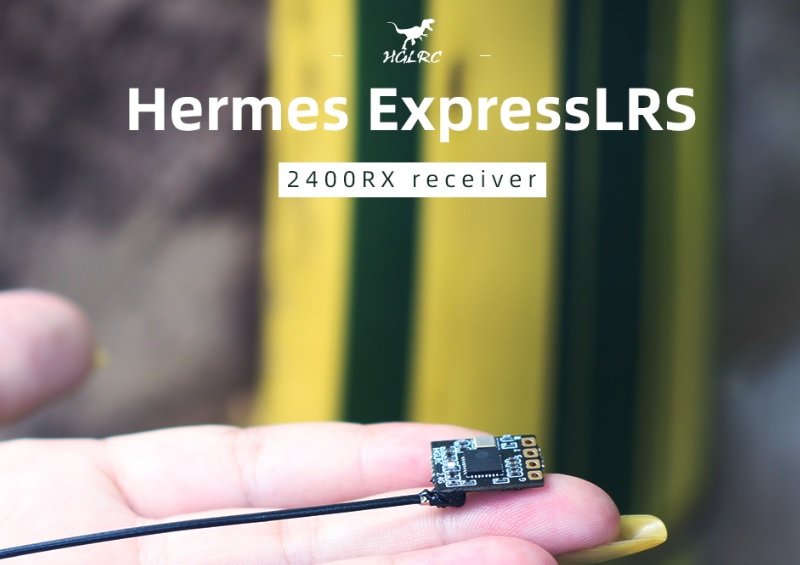After Happymodel and BetaFPV, HGLRC also announced their first ExpressLRS enabled radio system. Like its contenders, the Herme ExpressLRS also has 900Mhz and 2.4GHz versions. ExpressLRS (ELRS) is an open-source RC link for various applications, including drone communications. ELRS uses LoRa modulation with strong anti-interference technology to achieve long-range transmission with low power usage.
HGLRC claims that the Herme ExpressLRS 2400TX is currently the module with the lowest delay and the highest refresh rate on the market. It has an ultra-high refresh rate of up to 500Hz and is specially designed for FPV racing. The HGLRC ELRS TX is compatible with OpenTX enabled transmitters and an external TX module bay (JR standard 5pin socket). The ExpressLRS firmware can be updated via WIFI connection (at 10.0.0.1 IP address).
Both, RX and TX modules are using T-type omnidirectional antennas. The Herme 2400TX module measures 68×48.5×8 mm and weighs 37.5 grams. The ELRS 900RX and 2400RX receiver modules weights less than 1 gram and uses CRSF protocol.
HGLRC Herme ELRS 2400TX Specifications
| Frequency Range | 2400 MHz |
| Receiving refresh rate | 25Hz-500Hz |
| RF Output Power | 10dBm – 24dBm |
| Antenna gain | 2dBi |
| Input voltage | 6.5-17V |
| WiFi configuration | Yes |
| Connectors | USB Type C and XT30 |
| TX socket | JR standard 5pin socket |
| Size | 68×48.5×8 mm |
| Weight | 37.5g (without antenna) |

HGLRC Herme ELRS 900RX and 2400RX Specifications
| Herme ELRS RX | 900RX | 2400RX |
| Frequency range | 868MHz | 2400 MHz |
| Receiving refresh rate | 25Hz-500Hz | 25Hz-500Hz |
| Receiving protocol | CRSF | CRSF |
| Antenna gain | 2dBi | 2dBi |
| Antenna type | 915Mhz omnidirectional T | 2.4GHz omnidirectional T |
| Antenna connector | IPEX | IPEX |
| Size | 16.5x10x3 mm | 15x11x3 mm |
| Weight | 0.4 grams | 0.7 grams |
I can’t decide to pick 2.4Ghz or 900Mhz Elrs any suggestion?
900Mhz is for flying through concrete buildings (bando fpv), and 2.4Ghz for long-range
I’m afraid that’s not the case. 900 for range and penetration. 2.4ghz for lowest possible latency, smaller antenna sizes and much less chances of interference from other pilots (many more up in the air at the same time)
For the record…the reason behind 900mhz being good for penetration is the same reason why it’s better for long range. (Partially)